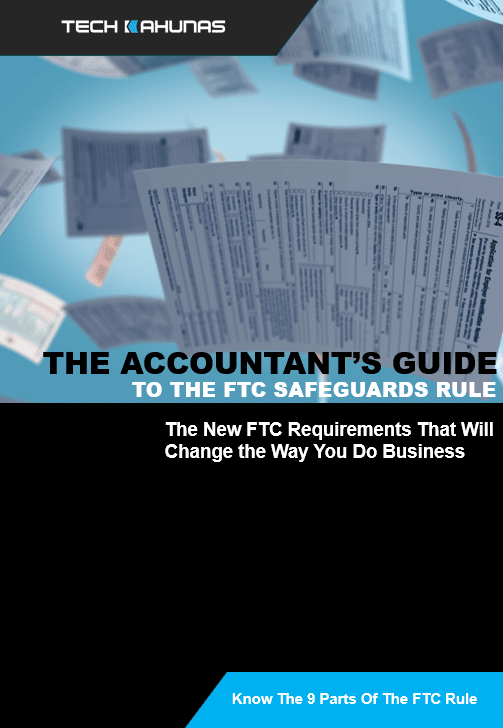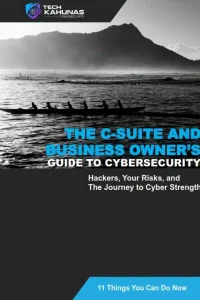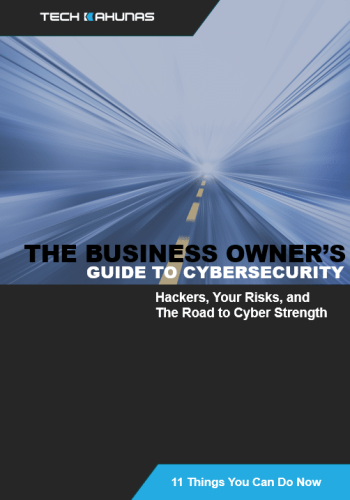In 2024, you'll confront seven critical cybersecurity threats to your family office. Phishing scams exploit social engineering and mimic legitimate sites. Evolving ransomware now uses quantum encryption, while insider threats emerge from trusted individuals exploiting their access. Cloud vulnerabilities necessitate stringent data controls, and IoT devices often represent insecure entry points. Supply chain attacks leverage weak vendor defenses, and data breaches require robust encryption and access control. Adopting advanced security measures like multi-factor authentication and regular risk assessments are essential. These threats are increasingly sophisticated and require continuous adaptation to maintain your defense. Discover more essential insights ahead.
Key Takeaways
- Phishing scams exploit trust through sophisticated spear phishing and whaling attacks targeting family office personnel.
- Evolving ransomware techniques pose significant threats, using quantum encryption to compromise sensitive financial data.
- Insider threats emerge from trusted individuals, necessitating stringent access controls and robust security cultures.
- Cloud vulnerabilities challenge data security, requiring multi-factor authentication and regular audits to ensure compliance.
- IoT devices are potential security weak links, needing network segmentation and continuous traffic monitoring for protection.
Phishing Scams
Phishing scams, a persistent threat in the cybersecurity landscape, target family offices with increasing sophistication. You'll find that spear phishing and whaling attacks leverage social engineering techniques to deceive high-value targets, exploiting trust and authority.
These targeted campaigns are meticulously crafted to harvest credentials, often bypassing basic security measures. Attackers deploy phishing kits to create convincing replicas of legitimate websites, tricking users into divulging sensitive information.
To combat these threats, implementing robust email filters is essential. These filters can identify and quarantine suspicious emails before they reach your inbox. However, technology alone isn't enough.
Conduct regular phishing simulations to test and enhance your defenses. These exercises can reveal vulnerabilities and help your team develop a keen eye for suspicious activity.
Awareness training is another vital component. Educate your family office staff on recognizing and responding to phishing attempts. Encourage practices like verifying unexpected requests for sensitive information.
Additionally, enforce multi-factor authentication across all accounts to add an extra layer of security. This measure can thwart unauthorized access even if credentials are compromised.
Ransomware Attacks
With ransomware attacks becoming increasingly sophisticated, you must understand how these evolving techniques can infiltrate your systems and compromise sensitive financial data.
The impact on your financial operations can be severe, leading to potential loss of funds, reputational damage, and operational disruptions.
Implementing robust prevention and mitigation strategies, such as regular data backups and advanced threat detection systems, is essential to safeguarding your assets and ensuring business continuity.
Evolving Ransomware Techniques
Amidst the rapidly changing landscape of cybersecurity, ransomware attacks have evolved into highly sophisticated threats that family offices must vigilantly prepare for. Techniques now employ quantum encryption, making decryption attempts without the decryption key virtually impossible.
You need to implement biometric authentication to add an additional security layer, guaranteeing that only authorized personnel access sensitive data.
To counter these threats, prioritize thorough cybersecurity training for your staff. Equip them with the skills to recognize phishing attempts and other common attack vectors.
Develop a robust incident response plan that includes digital forensics to analyze breaches effectively and gather evidence. Utilize threat intelligence to stay informed about the latest ransomware trends and tactics.
Regulatory compliance is essential. Confirm your security protocols align with the latest regulations to avoid penalties and bolster your defenses.
Cyber insurance can mitigate financial losses, but it shouldn't replace proactive measures. Establish security frameworks and conduct regular risk assessments to identify vulnerabilities in your systems.
Impact on Financial Data
Due to the pervasive nature of ransomware attacks, the integrity and confidentiality of financial data within family offices are under significant threat.
You're facing an environment where cybercriminals target financial data, encrypting it and demanding ransoms. This jeopardizes financial data integrity and disrupts operations. As a decision-maker, understanding the technical impact is essential for safeguarding your assets. Ransomware attacks can manipulate or destroy records, leading to financial losses and reputational damage.
Consider these points:
- Data Encryption: Attackers encrypt your critical financial data, rendering it inaccessible without paying a ransom.
- Exfiltration: Before encryption, hackers may exfiltrate data, threatening to leak sensitive information if ransoms aren't met.
- Operational Disruption: Inaccessible data can halt critical operations, impacting financial transactions and client trust.
- Financial Loss: Costs include ransom payments, recovery efforts, and potential legal fees, impacting your financial standing.
- Reputational Damage: Breaches can diminish trust among stakeholders, affecting long-term relationships and investments.
Analyzing these impacts emphasizes the importance of robust data protection strategies.
Implementing advanced monitoring and response systems is essential to detect and address threats promptly. You must constantly evaluate and update your data protection strategies to maintain financial data integrity and minimize the risks associated with ransomware attacks.
Prevention and Mitigation Strategies
Recognizing the severe impact of ransomware on financial data, it's vital to adopt effective prevention and mitigation strategies. Start by enhancing your cyber hygiene practices, guaranteeing regular updates and patches are applied.
Implement thorough risk assessments to identify potential vulnerabilities, and follow up with extensive vulnerability management to address these weak points. Conduct regular security audits to monitor the effectiveness of your security measures and adjust as necessary.
Employee training is essential. Make sure your team recognizes phishing attempts and understands the importance of secure practices. Establish robust access controls to limit data exposure, and use data encryption to protect sensitive information in transit and at rest.
Developing an incident response plan is fundamental for minimizing damage during a ransomware attack. This plan should include steps for isolating affected systems, communicating with stakeholders, and restoring data from backups.
Stay informed with threat intelligence to anticipate emerging threats and adjust your defenses accordingly. Remember, regulatory compliance isn't just a legal obligation but a framework that can guide your security efforts.
Insider Threats
While family offices often focus on external cybersecurity threats, insider threats can be equally damaging and are frequently overlooked. These threats arise from trusted individuals within your organization who've insider knowledge and access to sensitive information.
To mitigate these risks, it's vital to cultivate a robust security culture and implement thorough employee training. Regular risk assessments help identify vulnerabilities and determine who holds privileged access.
You'll want to enforce stringent access controls to restrict sensitive data to only those who need it. Behavioral monitoring and detection tools can play an important role in identifying unusual patterns and potential threats early.
Establishing a strong incident response plan guarantees you're prepared to act swiftly if an insider threat is detected. Trust relationships within the office must be maintained, but with a layer of verification to prevent exploitation.
Consider these steps to bolster your defenses against insider threats:
- Conduct regular employee training sessions to raise awareness and understanding.
- Implement strict access controls to safeguard critical information.
- Utilize behavioral monitoring tools to detect anomalies.
- Develop a robust incident response strategy for swift action.
- Perform regular risk assessments to stay ahead of potential threats.
Cloud Vulnerabilities
Cloud vulnerabilities present a significant challenge for family offices, as they increasingly rely on cloud services for data storage and management. You must prioritize cloud security to protect sensitive information. Implementing data encryption and robust access controls is imperative. Regularly review compliance regulations to guarantee all protocols align with industry standards. Multi-factor authentication further safeguards access to cloud environments, making unauthorized access harder.
A detailed incident response plan is essential. This guarantees quick actions if a breach occurs. Cloud migration should be handled meticulously, with a focus on understanding the security measures your cloud service provider implements. Vendor management becomes imperative in evaluating and selecting the right partners to minimize potential risks.
| Aspect | Key Considerations | Actions Required |
|---|---|---|
| Cloud Security | Data Encryption, Access Controls | Implement and regularly update security measures |
| Compliance Regulations | Alignment with Standards | Regular audits and updates |
| Incident Response | Breach Preparedness | Develop and test response strategies |
Service outages can disrupt operations, hence, developing robust backup strategies is necessary. By guaranteeing data redundancy, you maintain continuity even during disruptions. Leverage these strategies to mitigate cloud vulnerabilities and strengthen your family office's cybersecurity posture.
IoT Security Risks
As family offices integrate more Internet of Things (IoT) devices into their operations, the security landscape grows increasingly complex.
These devices, from smart thermostats to security cameras, are often the weakest link in a network, presenting smart device vulnerabilities that can be exploited by cybercriminals.
It's essential to understand that while these gadgets offer enhanced convenience, they also introduce significant risks if not properly managed.
To mitigate these risks, you need to implement robust network security protocols.
Start with segmenting your network to isolate IoT devices, reducing the chance of them being used as entry points to your main data systems.
Regularly update the firmware of all devices to patch known vulnerabilities.
Employ strong, unique passwords and consider using multi-factor authentication where possible.
Here are some steps you can take:
- Network Segmentation: Isolate IoT devices from critical data networks.
- Firmware Updates: Regularly update device software to fix vulnerabilities.
- Strong Authentication: Use unique passwords and multi-factor authentication.
- Traffic Monitoring: Continuously monitor network traffic for unusual activity.
- Device Inventory: Maintain an updated list of all IoT devices in use.
Supply Chain Attacks
In the context of supply chain attacks, you must scrutinize third-party vendor risks that could compromise your operations.
Attackers often exploit software vulnerabilities in these external systems, creating an entry point into your network.
Third-Party Vendor Risks
Although family offices focus on managing wealth, they often overlook the vital risks posed by third-party vendors, making them vulnerable to supply chain attacks.
As the complexity of vendor networks grows, so does the potential for breaches. It's essential to conduct thorough vendor assessments to evaluate their security postures. This guarantees that you're not inadvertently exposing sensitive financial data to cyber threats.
Implementing a robust risk management framework can help you identify and mitigate vulnerabilities before they're exploited.
Consider these important steps to manage third-party vendor risks effectively:
- Perform Regular Vendor Assessments: Evaluate vendors' security controls and compliance regularly to confirm they meet your cybersecurity standards.
- Establish Clear Contractual Obligations: Define security expectations and responsibilities within vendor contracts to hold them accountable.
- Monitor Vendor Performance Continuously: Use performance metrics to detect any deviations in security standards promptly.
- Limit Access to Sensitive Data: Confirm vendors only have access to the information necessary for their services.
- Develop a Response Plan for Vendor Breaches: Prepare to act quickly if a vendor's security is compromised, minimizing potential damage.
Software Vulnerabilities Exploited
While mitigating risks from third-party vendors is vital, it's equally important to address the software vulnerabilities that can lead to devastating supply chain attacks.
You must prioritize software patching to protect against known vulnerabilities. Implement regular vulnerability assessments to identify potential weaknesses in your systems. Conduct extensive security audits to guarantee your defenses are up to the industry's best practices.
Harness threat intelligence to stay ahead of emerging threats and tailor your risk management strategies accordingly. Develop a robust incident response plan to swiftly address any breaches, minimizing potential damage. Confirm your operations align with compliance measures to avoid penalties and enhance security posture.
Strengthen your application security by incorporating penetration testing and code reviews into your development lifecycle. These proactive measures help detect and rectify flaws before they can be exploited.
It's critical to maintain a continuous feedback loop between development and security teams, guaranteeing vulnerabilities are addressed promptly.
Data Breaches
Data breaches present a significant challenge for family offices, often exposing sensitive information to unauthorized access. In an environment where data privacy is paramount, and regulatory compliance is non-negotiable, any lapse can lead to severe financial and reputational damage.
Family offices must be vigilant about protecting their data assets by understanding common vulnerabilities and implementing robust security measures.
To address these challenges, consider the following strategies:
- Implement Advanced Encryption: Encrypt sensitive data both at rest and in transit to prevent unauthorized access.
- Regular Security Audits: Conduct frequent audits to identify potential weaknesses in your cybersecurity infrastructure.
- Employee Training Programs: Educate staff about phishing attacks, social engineering, and safe data handling practices to minimize human error.
- Access Control Mechanisms: Limit data access to authorized personnel only, using multi-factor authentication and role-based permissions.
- Incident Response Plan: Develop and regularly update a thorough incident response plan to quickly contain and mitigate breaches.
Ensuring compliance with data privacy laws and regulations requires continuous monitoring and adaptation.
Frequently Asked Questions
How Can Family Offices Ensure Cybersecurity Compliance With Evolving Regulations?
You should conduct regular cybersecurity audits to identify vulnerabilities. Align your practices with evolving regulatory frameworks to guarantee compliance. Stay updated on legal changes, implementing necessary adjustments swiftly. This proactive approach minimizes risks and enhances cybersecurity posture.
What Are the Emerging Cybersecurity Trends Family Offices Should Watch in 2024?
Like a lurking shadow, ransomware attacks and data breaches demand your attention. Monitor insider threats, IoT vulnerabilities, and cloud security. Don't overlook third-party risks, phishing scams, or identity theft as they weave through your digital defenses.
How Should Family Offices Approach Cybersecurity Training for Non-Technical Staff?
You should enhance cybersecurity awareness by implementing phishing simulations and regular training sessions. Focus on security protocols and incident response to guarantee non-technical staff understand their roles, reducing risks and improving overall security posture in your family office.
What Role Does Artificial Intelligence Play in Enhancing Cybersecurity for Family Offices?
You wonder how AI-driven solutions can revolutionize your cybersecurity. Predictive analytics detect potential breaches before they happen. Threat intelligence keeps you informed, while automated response swiftly neutralizes threats, ensuring your family office remains secure and resilient.
How Can Family Offices Effectively Manage Cybersecurity Risks During Mergers or Acquisitions?
You should conduct a thorough risk assessment and due diligence. Develop an integration strategy focusing on vendor management. Guarantee incident response plans are robust and culturally aligned with the new entity to effectively manage cybersecurity risks.
Conclusion
In traversing the cybersecurity labyrinth of 2024, you'll face threats akin to a modern-day Trojan War. Phishing scams are the sirens luring your data, while ransomware attacks threaten like a lurking Minotaur. Insider threats and cloud vulnerabilities whisper secrets from within, and IoT devices reveal Achilles' heels. Supply chain attacks and data breaches form a Pandora's box of peril. Staying vigilant and proactive is your Odyssean journey to safeguard your family office's digital treasures.



 Get your CPA firm aquainted with new FTC rules.
Get your CPA firm aquainted with new FTC rules. 




